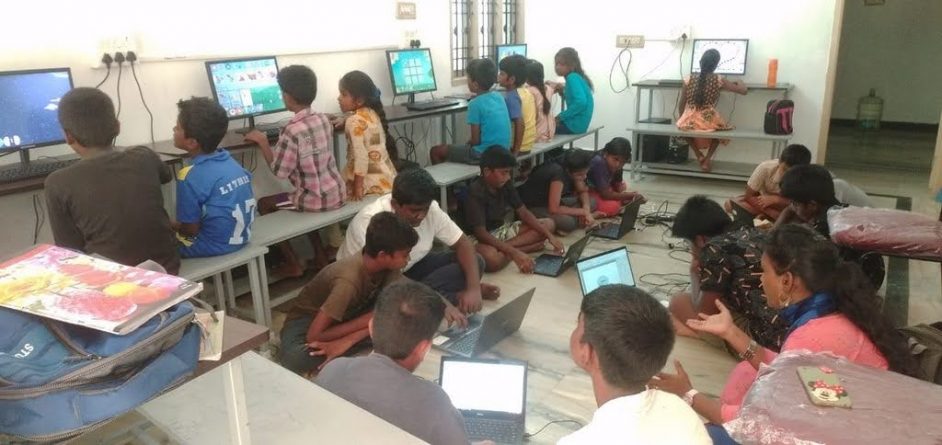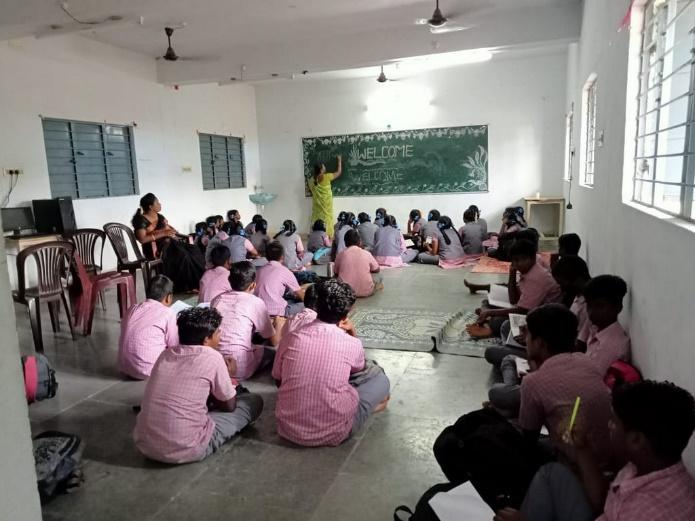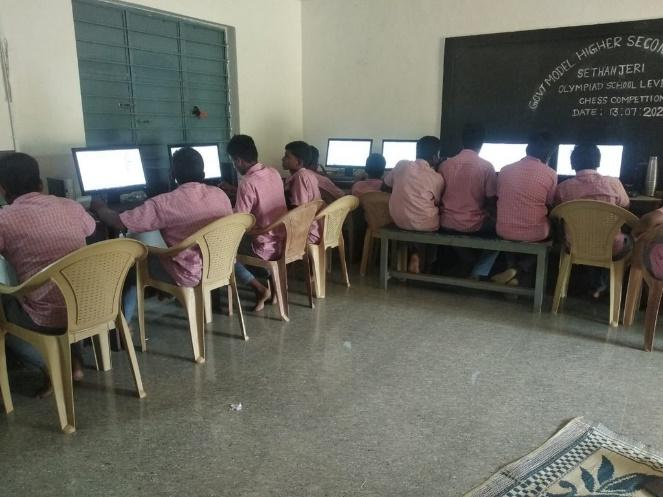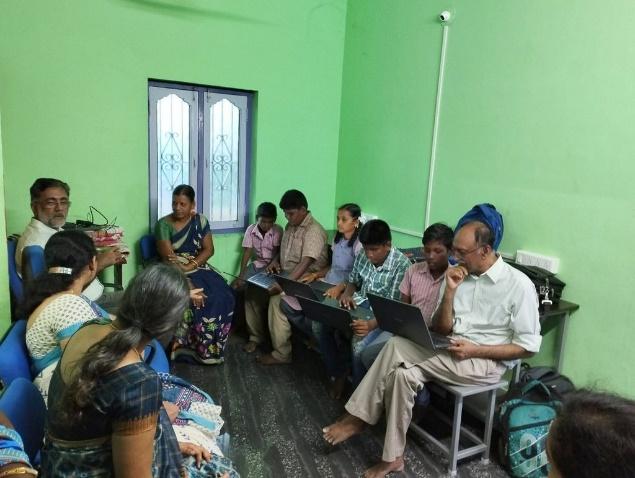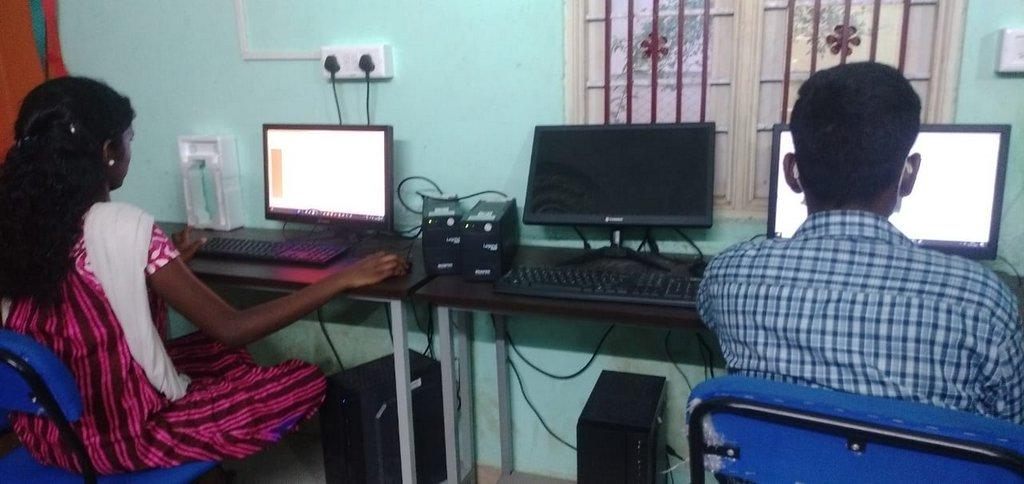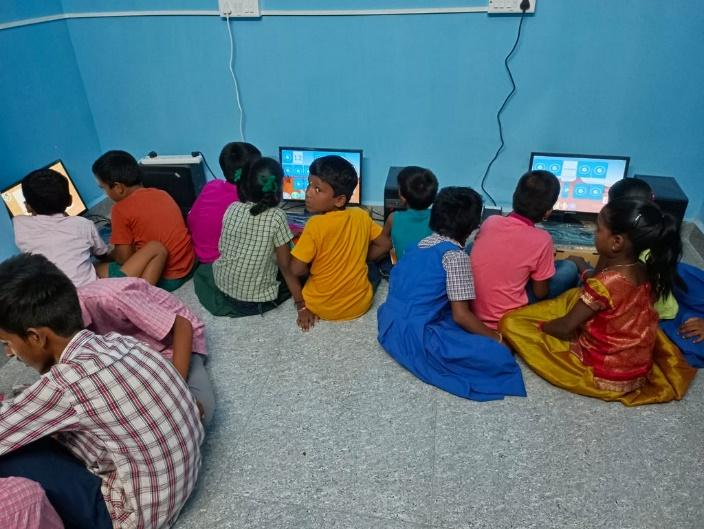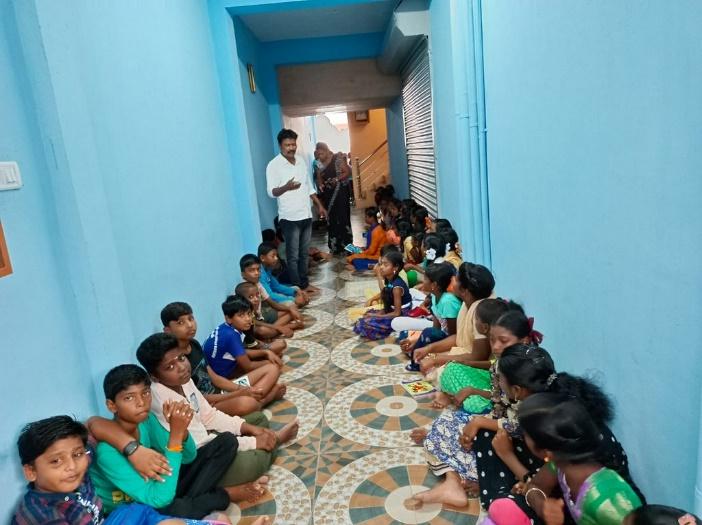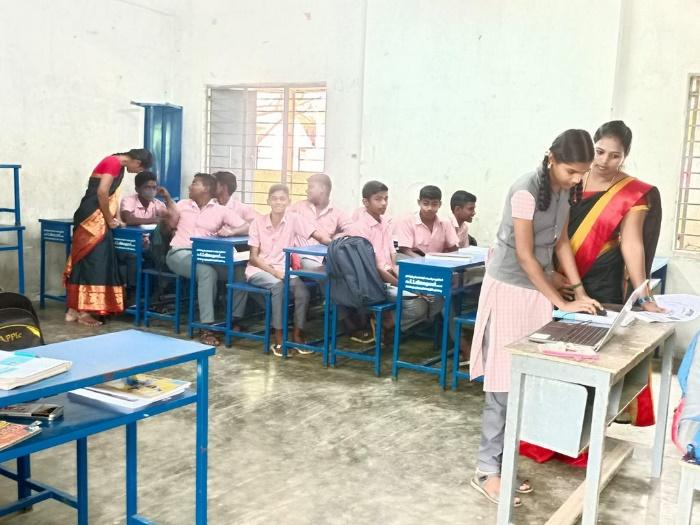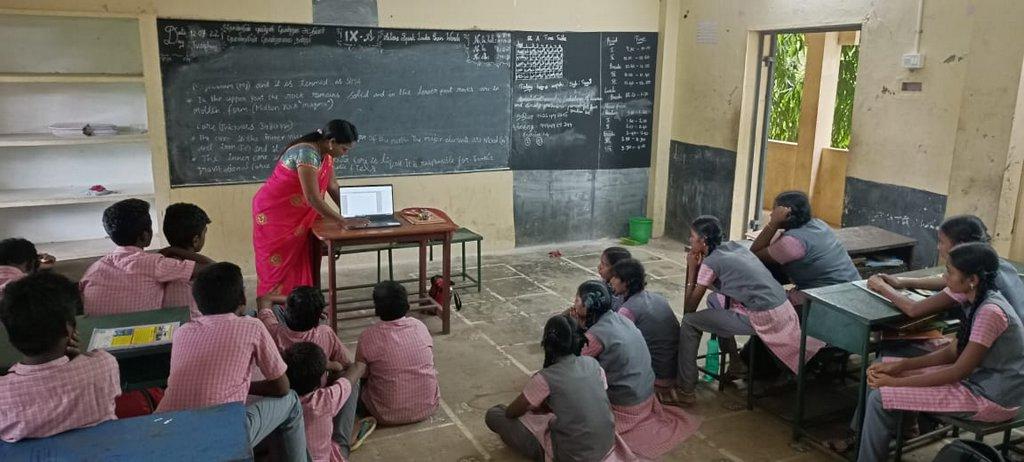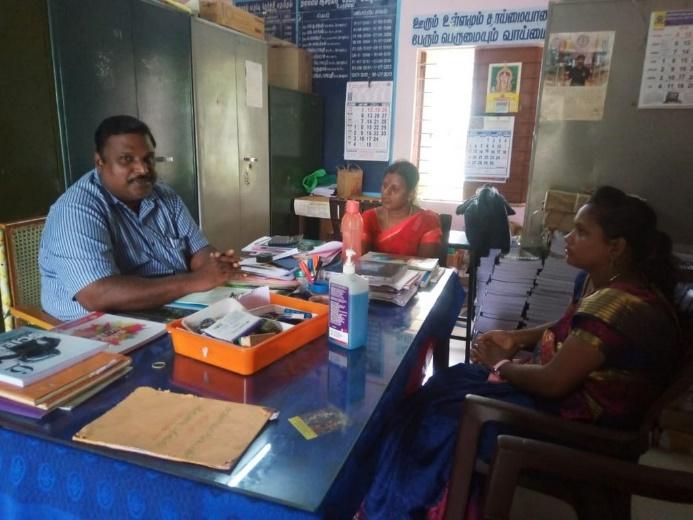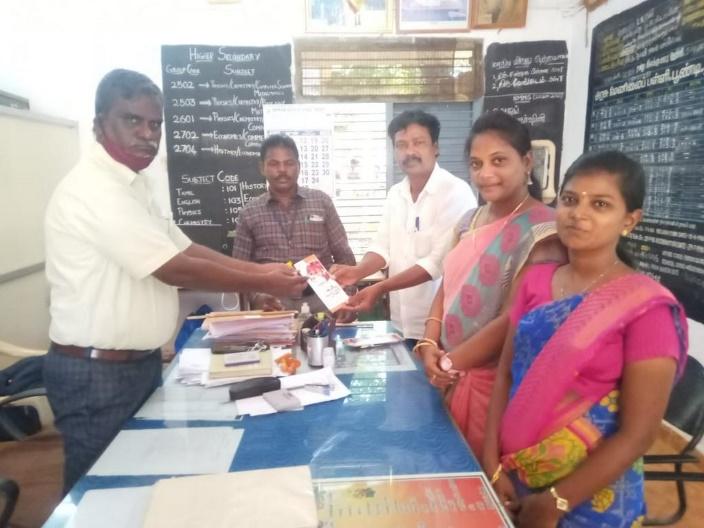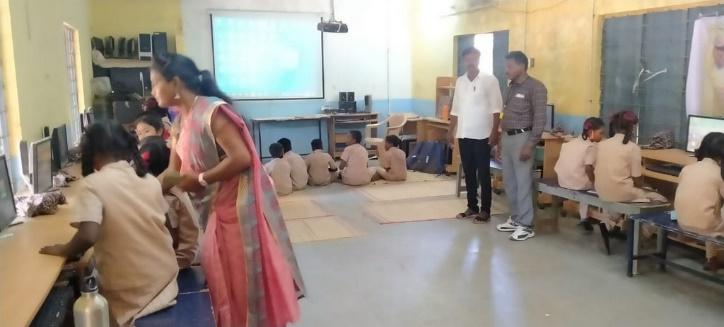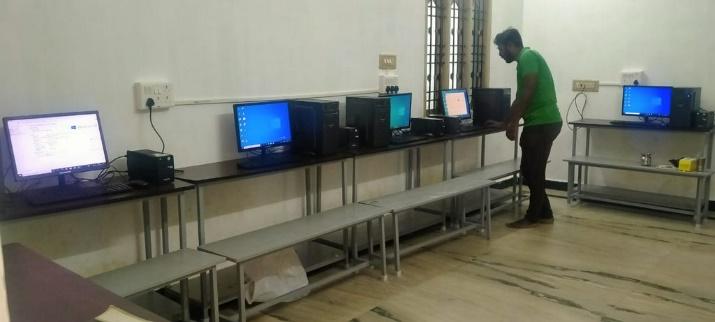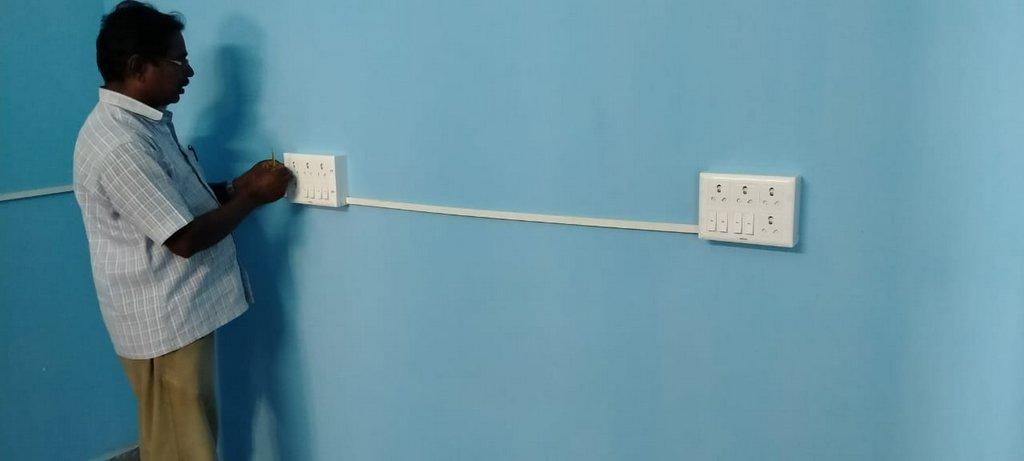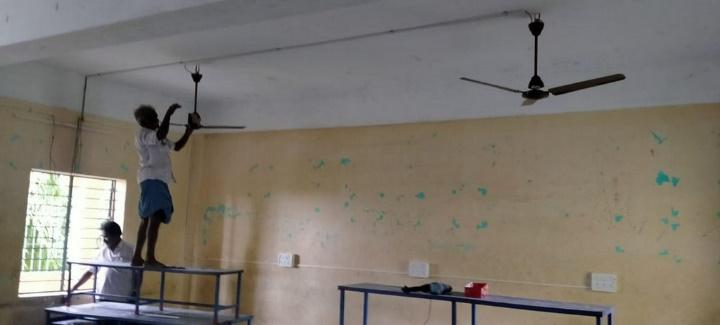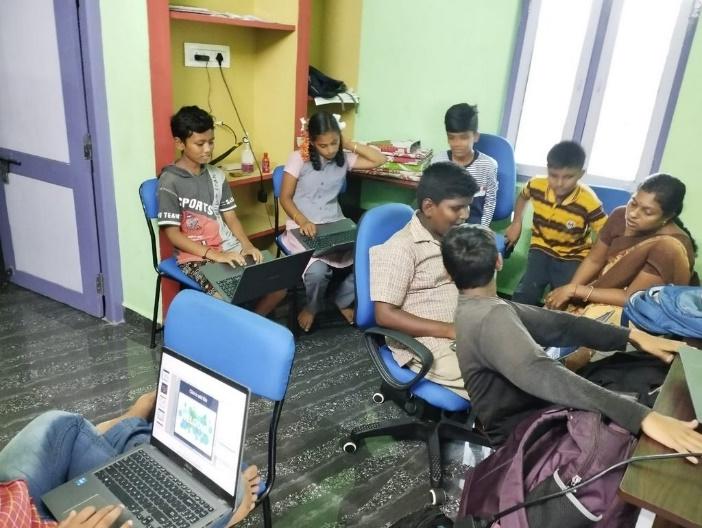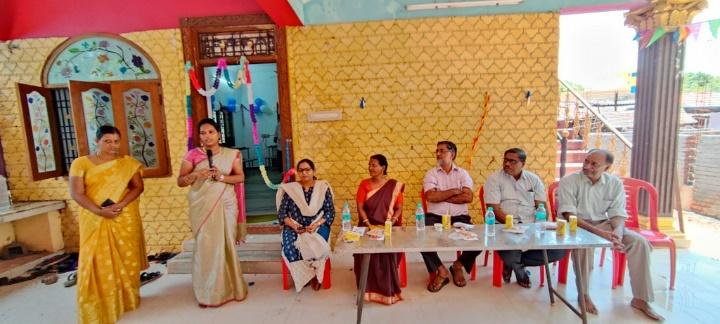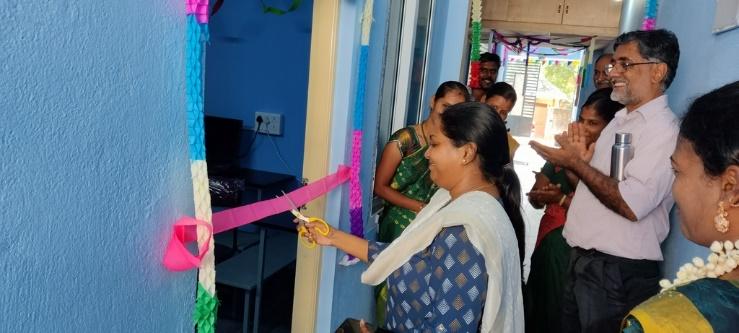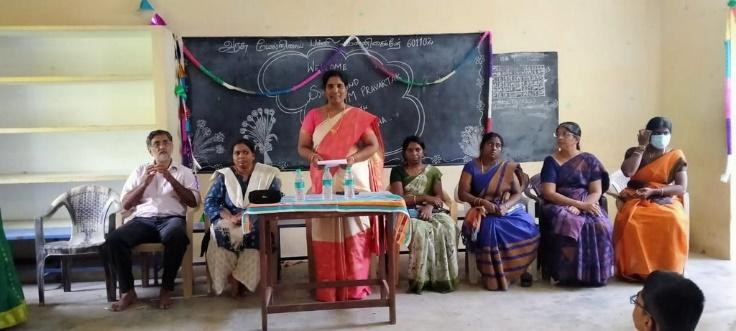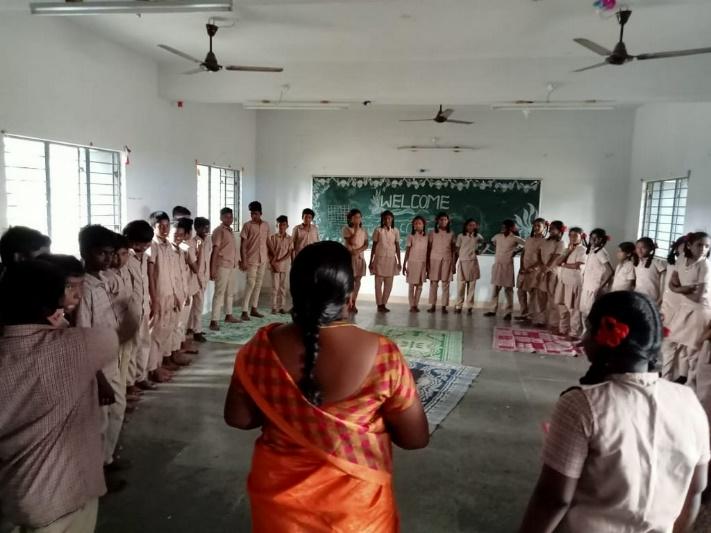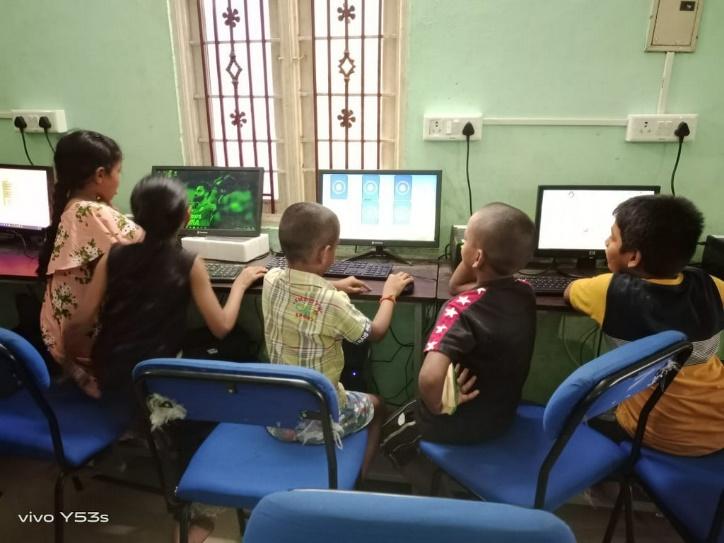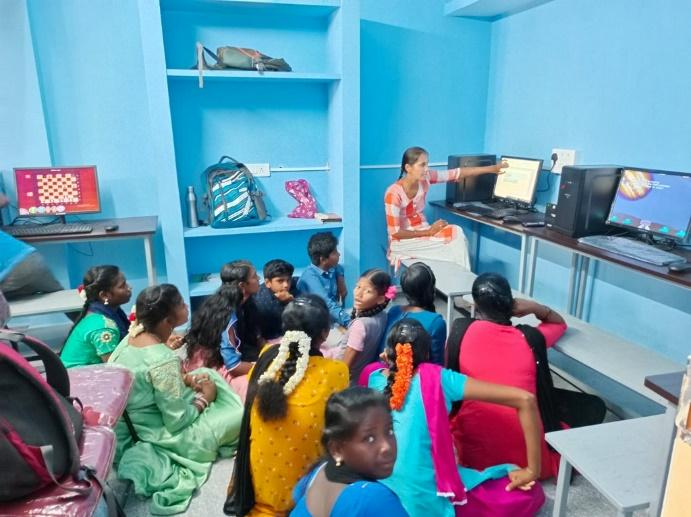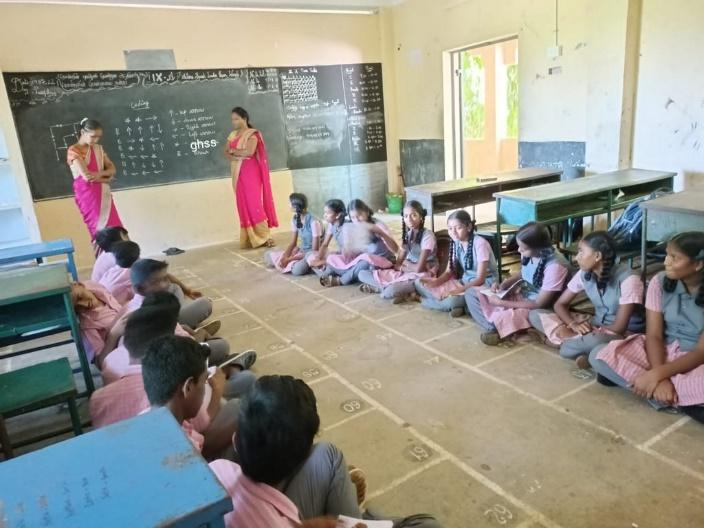The first two RTCs have completed one 6-month semester and two new RTCs have also started. Here is a report on their functioning over the last 6 months.
Rural Technology Centres – Aug 2022
IITM Pravartak and Asha launched the first two Rural Technology Centres back in Jan 2022 at Kanakamma Chathram and Seethanjeri in Thiruvallur District. These were inaugurated on 4th Feb 2022.
This report provides an update on their functioning and also covers the opening of two new RTCs at Kannigaiper and Poondi. Here are photos from the Rural Technology Centres related to various points covered in this report. And here is an album of photos from the inauguration of the two new RTCs at Kannigaiper and Poondi.
Functioning of Existing RTCs
As planned our RTC teachers spent 3 hrs at the associated govt. higher secondary school and 3 hrs at the centre. At the school their focus was basic digital literacy. Over time we expect to move both basic digital literacy and basic programming to the school. For now we are teaching basic digital literacy at the schools and for many of the students with no prior experience with computers, basic digital literacy needed to be repeated at the centres as well. For children with some knowledge of how to use computers we would start them with basic programming course at the centre.
At the GHSS Kanakamma Chathram, we were given a nice big room with a projector and a computer (which weren’t functioning but which we could repair and use) for conducting our classes. We also added one more used computer to this room and our teachers carried with them 4 laptops. These allowed us to conduct our classes at school well. With the exam pressures, classes 11th and 12th weren’t sent regularly to our classes. Our teachers taught children in classes 8th to 10th for most part.
At GHSS Seethanjeri there weren’t sufficient number of classrooms available. We were allocated a room which was used as a store room. We readied this room for our use. We put 2 used desktop computers and our teachers also carried 4 laptops every time to the school. Here the focus on board exams was even more and they didn’t send students in classes 10 to 12 to our classes for most part. Our teachers taught children in classes 6 to 9.
These problems limited the number of children we could formally enroll (minimum 75% attendance) in our batches. At Seethanjeri we had 3 batches with a total of 40 children enrolled and at Kanakamma Chathram we had 4 batches with 50 students. At Seethanjeri 2 of the batches were taught basic programming and one batch was taught basic digital literacy. At Kanakamma Chathram 1 batch was taught basic programming and 3 batches were taught basic digital literacy.
During this time, several visitors came to the RTCs. Two professors from B.V. Raju College of Engineering visited us on March 4th to learn from what we are doing so that they implement the same in a centre they are planning to run. 4 Professors from IITM visted the RTCs on 27th April. People from Amazon also visited out RTCs on 5th April. These are all covered in the report here. Besides these teams from RuTAG and CREATE projects at IITM also visited the RTCs on 30th March and 20th June respectively.
Final Assessments and Projects
To get the certificate of completion the students registered for the classes need to have an attendance of 75%, complete a one-month long project and also get a passing mark in the final assessment. About 30 students from Seethanjeri and 35 students from Kanakamma Chathram appeared for the assessment.
To keep the assessment formal, the assessments were conducted by teachers from the other RTCs (including the new teachers from the new RTCs). These assessments were conducted from July 13th to 16th. Note these assessments were conducted on an internet enabled laptop and required a good understanding of how the computer and internet works (or basics of Scratch programming in the case of programming test) rather than remembering a few facts taught by their teacher. Here are a couple of sample questions from our digital literacy paper.
In addition to the assessment, the students also worked on a project from about mid-April onwards. They worked on the project for a total of about 1.5 months. The digital literacy students did a presentation as their project and the programming students did a Scratch program as their project. We expected a minimum quality from these projects. Many of the students did far better than this basic requirement.
Two New RTCs
Our biggest problem in starting new RTCs has been getting suitable teachers. Our volunteers from software industry have been involved in some intensive training of our existing computer teachers over the last several months. We were able to get the teachers required for two new RTCs. We got two teachers first for the new RTC in Kannigaiper. We already had a significant presence in the village. We were supporting the primary school in that village as well as several schools nearby. Several of our teachers were from that village as well as nearby places.
We identified a potential place for the RTC. It was located very close to the main road but was still a little quiet. Further it was also in the ground floor. All these were positive. However, the space was quite small. They were allowing us to use the corridor outside. But still it will be a little congested. But we didn’t have a choice. We did not get any other place and we rented this place. Here are children in our centre even before it got ready with furniture, new computers etc.
The two teachers for Kannigaiper are Nadhiya and Poonkodi. They canvased students to join the centre in several nearby middle, high and higher secondary schools. They reached out to the higher secondary school in Periyapalayam and also the high schools at Thirukandalam and Athivakkam. They also visited a few middle schools in the area and made them aware of our centre. The number of children interested in what we are offering at the centre is a lot. They are in the process of creating batches out of these students and assigning them time slots etc. Here are some photos of our teachers canvasing at various schools.
We had decided on Pandur as the location for our next RTC. We had one teacher from Pandur and another teacher from Poondi (which was about 10 Kms away) but willing to travel up to the Pandur RTC. Pandur was also very close to Kaivandur which is where Asha started in Thiruvallur district and which is where our office is. It is kind of the center of our operation. However, one major drawback was that there was no government higher secondary school in that area. The main free higher secondary school in that area was one run by TELC (The Evangelical Lutheran Church). Given the restrictions of FCRA (i.e. we cannot purchase assets for another organisation with our FCRA funds) and given our own restrictions (in working with other non-secular organisations), we wouldn’t have been able to do work inside the TELC higher secondary school. We were instead thinking of sending our two teachers to work at two nearby high schools at Thirupatchur and Pattaraiperumbudur during the day and then in the evening run the centre which will be located in Pandur and will cater the children from the TELC school as well as these other two high schools. However the HM at Pattaraiperumbudur high school did not have the space to allow our teacher to do any work inside the school! Here are a couple of photos of our teachers canvasing.
Getting the new RTCs ready
We purchased furnitures for the RTC centres. We purchased 10 fixed chairs for the teachers as well as the students. We also bought as many 4’ x 2’ tables with benches as would fit in the centres for the computers. Electrical work was also done in both the centres. Electrical work was also done in the classroom at GHSS Kannigaiper.
We purchased 5 desktop computers for each RTC. Besides these we had received used laptops from Ford. We provided each of the RTCs with 5 laptops each. Kannigaiper RTC which started earlier has started functioning even before the furniture was ready. The teacher and the students were working on their computers sitting on the floor. Even with the furniture many of the children are continuing to work from the floor as there isn’t enough space and many of the batches have a lot of children.
Staffing and Holidays
Divya and Ramya were teaching at the Seethanjeri RTC and Kumari and Eswari were teaching at the Kanakamma Chathiram RTC before the summer closing. When the schools reopened Ramya could not rejoin as marriage had been arranged for her. Rajkumari worked their for a couple of weeks. We appointed a new RTC teacher, Radha who was working as a computer teacher and had been getting trained to become an RTC teacher. We also hired a new teacher Yamini for the Kanakamma Chathiram RTC. Kumari got elevated to be a lead teacher for the RTCs. She has already been playing this role. But with the number of RTCs growing, we felt the need for her to take up greater coordinating responsibilities. She visits the other RTCs once or twice a week. She only directly manages one advance batch at Kanakamma Chathiram.
We also onboarded Nadhiya, Poonkodi, Rajkumari and Dhatchayani to work in the two new RTCs at Kannigaiper and Poondi. Kumari is coordinating the curriculum development for the new courses as well as handling the training of all the RTC teachers.
The RTCs closed a little before the schools because the children stopped coming during their exams. They were closed for the month of May and started a couple of weeks before the schools on June 1st.
The old batches continued coming even during the holidays and also after the schools reopened. They were working on their projects during this time. But early July the new RTC teachers were also on board doing their work in the RTCs.
Inauguration Functions
The two new RTCs at Poondi and Kannigaiper were inaugurated on the 25th of July. Ms. Sona Kumaresan, business head at Syrma SGS, was the chief guest for these inauguration functions. Syrma SGS is supporting these two RTCs through Pravartak. The function was first held at the RTC centre at Poondi. As there was sufficient space at this centre, we could put a shamiana outside the centre and hold the function here. The teachers from the school, the BEO of Poondi Block, volunteers from Asha and students of the centre attended the function. BEO of Poondi block, Ms. Anne Patricia Porkodi, cut the ribbon to open the centre. The children performed some dances and also gave a craft work they had themselves created as gift to all the guests. Then we took Ms. Sona Kumaresan to the school and showed her the lab there as well.
After a lunch we went to the centre at Kannigaiper. Ms. Sona cut the ribbon to inaugurate the centre. However as there wasn’t enough space, we couldn’t hold the function there. We held the function at the classroom that has been prepared as the computer lab in GHSS Kannigaiper. Here too there were a couple of dance performances by the students. We got the opportunity to interact with the students as well.
RTCs in Operation
After the assessments in mid-July the two old RTCs started organising themselves for the new semester. The two new RTCs also started organising themselves for the semester by the second half of July. Over the last 6 months we have evolved an operational structure for the RTCs. We break the year into two semesters. One semester will run from July to Jan and the other one from Jan to July with some overlap. With the exam breaks etc. we will about 4.5 to 5 months of education in each semester. We will break this into 3 months of instruction followed by 1.5 months of project work.
Each week, the RTCs will have Thursday as holiday. They will have 3 hours each day from Monday to Friday (other than Thursday) and 6 hours on Saturday. On the week days, formal classes will only be from 4:30 to 6:00 or 6:30. From 6:30 to 7:30, the centre will be used by children in the close vicinity of the centre as a general digital library. The students will be organised as batches. Each batch will get 3 hours a week which may on two evenings or one half of Saturday. Children from more remote hamlets prefer the Saturday slot as they have to travel only on one day and that too during day-time. We will have enough slots for 4 batches. With the number of computers and space in the centres, we will be able to manage up to 20 students per batch.
In addition the two courses offered last semester, the two old RTCs were also offering a course on web-development. This was based on the web development unit of the“CS Discoveries” course in code.org. So the course offered will be,
| Basic Digital Literacy | This will teach the children basics of how to use a computer. It will teach them text document, spread-sheet and presentations using LibreOffice. It will teach them how the Window multi-tasking Windowing environment works. It will also teach them the basics of operating systems, files, folders etc. Finally it will also introduce them to the Internet and the various tools available on the Internet like web browsing, search, Wikipedia, emails, social media etc. |
| Basics of Programming | It will teach them programming through unplugged activities as well as on the computer. On computer it will introduce them to the idea through Blockly games and take that further with various programming exercises with Code.org tools as well as Scratch. |
| Web Development | This course will empower the students to create and share their own content using code.org’s Web Lab platform. They engage in problem solving as it relates to programming, as they learn valuable skills such as debugging, commenting, and structure of language. |
As things progress, our idea is to teach the basic digital literacy and basic programming to all the children in classes 6 to 9. Given the larger number of students, smaller number of computers etc., these same courses will take the whole year when done in the school. The basic structure of 2/3rds instruction and 1/3rds project work will be followed in the school as well. Once they complete these two courses in the school, they will be able to come to the centre for the more advanced courses. At the initial stages, since there aren’t enough children in the school who have gone through these courses, we offer these courses at the centres as well.
Here are a couple of recent photos from each of our RTCs.
Kanakamma Chathiram
Seethanjeri
Kannigaiper
Poondi

